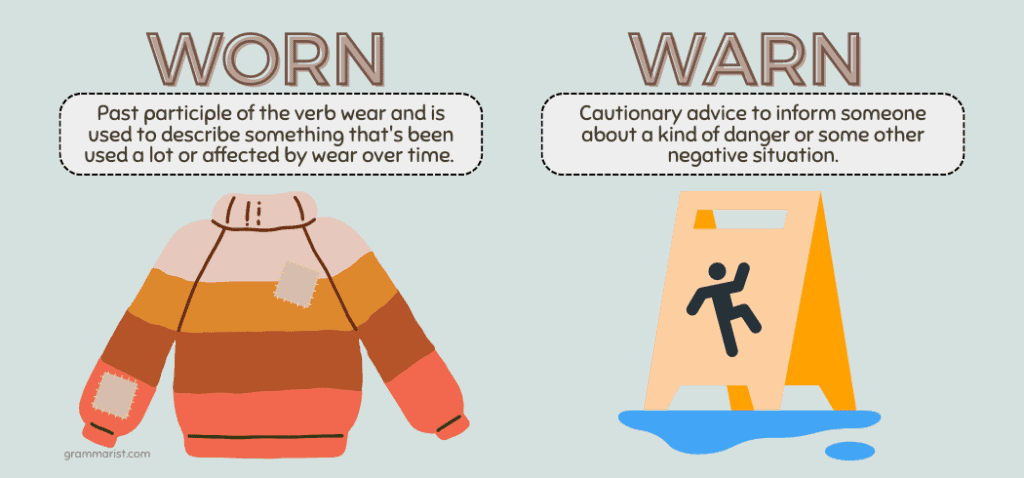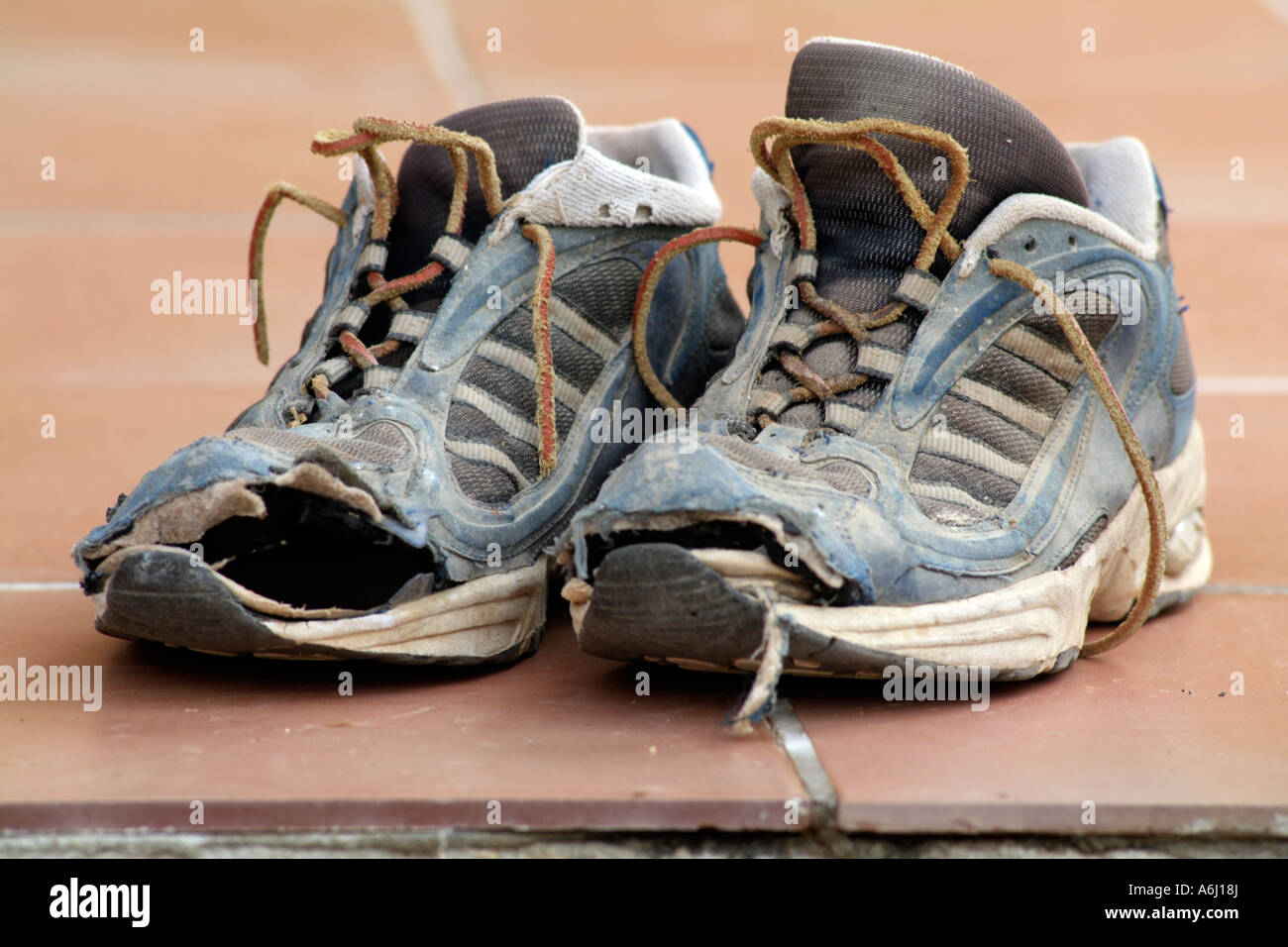Worn On TV - Your Guide To Celebrity Style
Have you ever found yourself completely caught up in a favorite television show, so much so that a character's outfit or a particular accessory just leaps out at you? It happens a lot, doesn't it? We see something on screen, a piece of clothing perhaps, and a thought sparks: "I wonder where I could get that exact item?" It's a pretty common feeling, you know, wanting to bring a little bit of that on-screen magic into our own daily lives, especially when it comes to the clothes that are seen on our most watched programs.
The word "worn" itself, when you think about it, usually brings to mind something that has seen quite a bit of life. It can mean something that has lost some of its original newness or value because it's been used a good deal, or perhaps something that shows signs of having been around for a while, maybe a screw with threads that are a little less sharp, or a jacket with pockets that have softened over time. But when we talk about things "worn on TV," it takes on a slightly different meaning, more about what someone put on for a scene rather than how old the item might be. It's really about the choice of what someone put on, isn't it?
This fascination with what characters put on has actually created a whole interesting area for fans and fashion lovers alike. People are always looking for ways to get their hands on those exact pieces, or at least something very similar. This article is here to walk you through that very idea, exploring what it means for something to be "worn on TV" and, perhaps more excitingly, how you can actually find and acquire those very items that catch your eye while you're watching your favorite series or a big movie. It's kind of fun, you know, connecting with the stories in a tangible way.
Table of Contents
- What Does "Worn" Really Mean for Your Favorite Shows?
- Why Do We Care About Clothes Worn on TV?
- How Do Shows Pick What's Worn on TV?
- Where Can You Find Clothes Worn on TV?
- The Thrill of Dressing Like Your Screen Heroes
- Beyond Just Shopping - The Connection of What's Worn on TV
- A Look at Iconic Styles Worn on TV
- Keeping Up with What's Worn on TV
What Does "Worn" Really Mean for Your Favorite Shows?
When we talk about something being "worn," the basic idea is that it's the past form of putting something on. So, if you put on a shirt yesterday, you "wore" it. But when we add the idea of something being "worn on TV," the meaning gets a little more specific, doesn't it? It's not just about the act of putting something on, but rather about the item itself and its condition. For example, a rug that has seen many footsteps might be described as "worn" because it's become thinner or shows its age. Or, a suit that has been used for many years might have "worn" pockets, showing signs of frequent use. This suggests a piece that has been through a bit, perhaps a lot of action on set, or maybe it's just meant to look like it has.
The text tells us that "worn" can mean something has lost some of its original usefulness or value because it's been used or handled a lot. It also points out that something can be "damaged by long use," giving us examples like "worn threads on the screw" or "a worn suit." This really paints a picture of something that isn't brand new, something that carries a story, so to speak. In the context of clothing "worn on TV," this might mean a costume designed to look like it's been through a lot with a character, or perhaps an item that's part of a character's established look, suggesting a history, even if the item itself is new for the production. It's actually quite clever how they do that, isn't it?
Then there's the other side of "worn," which can mean feeling tired or exhausted. We hear phrases like "weary," "drained," or "beaten." This definition, while not directly about clothing, subtly connects to the idea of a character who might look "worn" after a long day or a tough situation. It's interesting how a single word can carry so many different shades of meaning, especially when applied to what we see on screen. So, when you think about clothes "worn on TV," it’s more about the visual story they tell, whether it's a fresh, crisp outfit or something that suggests a long journey.
- Club Wyndham Royal Garden At Waikiki
- The Summit At Big Bend
- Marcus Hillside Cinema
- Kamp Dels
- The Sharpest Rides Car Dealer
Why Do We Care About Clothes Worn on TV?
It's a pretty common experience, you know, to get really invested in the stories and characters that appear on our screens. We spend hours watching them, following their lives, their ups and downs. And a big part of how we connect with these characters is through how they look, what they put on. The clothes they wear aren't just random choices; they often help tell us something about who that person is, their mood, or what's happening in their life. So, when we see a particularly stylish jacket or a striking dress, it's not just about the garment itself, but about the character wearing it and the story it's a part of. That's actually a big part of the appeal, isn't it?
There's a certain magic in seeing something you like on screen and then being able to find it in the real world. It's like bringing a piece of that fictional world into your own. For many, it's a way to feel closer to a character they admire, or to simply adopt a style that truly speaks to them, a style that they might not have considered otherwise. It’s also a way to celebrate a show or movie you really love, to show your appreciation for the storytelling and the visual artistry. This connection is quite strong for a lot of people, apparently.
Beyond just looking good, the clothes "worn on TV" can sometimes spark trends or even become iconic. Think about how many times a certain outfit from a popular show has become a talking point, inspiring people to try out similar looks. It’s a way for television to influence culture beyond just the plotlines. It’s about the whole package, the characters, the stories, and yes, even the very clothes they choose to put on for us to see. This kind of influence is, in a way, pretty powerful.
How Do Shows Pick What's Worn on TV?
You might wonder how all those amazing outfits and looks get chosen for television shows and movies. It's certainly not a random process, you know. Behind every character's appearance is a team of talented people, often called costume designers, who work incredibly hard to make sure every piece of clothing tells a part of the story. They think about the character's personality, their background, their emotional state, and even the time period or setting of the show. So, a character who is feeling a bit down might wear more subdued colors, while someone celebrating might wear something brighter and more expressive.
These designers also consider how the clothes will look on camera, under different lighting, and during various actions. A costume that looks great in person might not translate well on screen, so there's a lot of testing and adjusting involved. They might source items from big fashion houses, thrift stores, or even create custom pieces from scratch. The goal is always to support the narrative and help the actors truly become their characters. It's a pretty detailed job, as a matter of fact.
Sometimes, the clothes "worn on TV" are chosen to make a statement, to reflect a certain era, or to highlight a specific theme of the show. For instance, the text mentions "the ladies of The Bold and the Beautiful manage to keep their wardrobes chic at all times," which suggests a deliberate choice to portray a certain level of style and sophistication that matches the show's dramatic storylines. Every stitch and fabric choice serves a purpose, adding layers to the visual storytelling that viewers pick up on, sometimes without even realizing it. It's really quite fascinating, isn't it?
Where Can You Find Clothes Worn on TV?
This is where the real fun begins for many fans! Thanks to the internet, it's become much easier to track down those specific items that characters have put on in your favorite shows. Gone are the days when you could only guess where an outfit came from. Now, there are dedicated online places that do the detective work for you, creating what some call a "shoppable index" of items. So, if you saw something you liked on a show like "Pretty Little Liars" or "Scream Queens," there's a good chance someone has already found it for you.
The text points to several ways to find these items. There are websites that literally let you "Shop every outfits and products seen on TV series, TV shows, movies and music videos worn by your favorite actors and people." This means you can often buy the exact clothes seen on screen. Think about shows like "Friends," "Gilmore Girls," "Gossip Girl," or classic movies like "Mean Girls" and "Clueless." These platforms are designed to help you find and purchase those very pieces that caught your eye. It's almost like magic, you know, being able to buy something you just saw on a character.
Even for shows that have finished their run, sometimes called "faded shows," the interest in their fashion doesn't fade. The text notes that these shows "have ended but can still be viewed," and crucially, you can still "Find and buy outfits on TV shows." This means that even if a show aired years ago, the desire for its iconic styles, like those from "Sex and the City" or "Charmed," remains, and the resources to find them are still available. It's a pretty cool way to keep the spirit of a beloved show alive, don't you think? You can literally dress like the queen you are after seeing the new "Lion King" movie, if that's what you're into.
For those who are really invested in the dramatic storylines, like those on "Jane the Virgin," finding what's "worn on TV" becomes part of the whole experience. These sites act as a helpful tool, making it simple to connect your screen time with your personal style. They basically serve as your shop for film and TV fashion, making it possible to get clothes as seen worn on TV shows and movies. It's kind of like having a personal stylist who knows every costume from every show, which is pretty handy, in a way.
The Thrill of Dressing Like Your Screen Heroes
There's something uniquely satisfying about putting on an outfit that you know was "worn on TV" by a character you admire. It's more than just buying a piece of clothing; it's about capturing a feeling, a piece of the story that truly moved you. When you slip into a dress that reminds you of a beloved character from "Desperate Housewives" or a top that echoes the style of "Friends," you're not just getting dressed; you're stepping into a little bit of that on-screen world. It's a pretty neat experience, honestly.
This feeling can be quite powerful. It allows you to express your appreciation for the show, and perhaps even feel a stronger connection to the characters and their journeys. It's like a subtle nod to your favorite stories, a way to carry a piece of that entertainment with you throughout your day. For fans, this is a tangible way to celebrate what they love, to show off their passion for storytelling and style all at once. It's a bit like joining a secret club, you know?
Moreover, finding and wearing these items can spark conversations with other fans. Someone might recognize your outfit and instantly connect with you over a shared love for a particular show. It creates a sense of community, a shared appreciation for the details that make these shows so special. This kind of interaction is, in some respects, a really cool bonus to the whole experience.
Beyond Just Shopping - The Connection of What's Worn on TV
The desire to find what's "worn on TV" goes beyond just making a purchase. It really speaks to how deeply we connect with the stories and people we see on screen. For many, it's about celebrating the art of storytelling and the craft of costume design. These outfits are carefully chosen to help define a character, to show their growth, or to highlight a key moment in the plot. So, when you look for these items, you're also appreciating the thought and effort that went into creating that visual identity. It's pretty cool to think about, isn't it?
This trend also shows how television has become a major source of style inspiration. It's not just fashion magazines or runways anymore; our favorite shows are setting trends and influencing what people want to put on. The impact of a character's specific look can be huge, shaping what's popular in stores and online. This kind of influence is actually quite broad, affecting many aspects of everyday style.
What's more, this pursuit of on-screen fashion fosters a lively community among fans. People share tips on where to find items, discuss the meaning behind certain costumes, and celebrate their finds together. It's a way for viewers to extend their enjoyment of a show beyond the screen, creating a shared experience that builds connections. This communal aspect is, in a way, just as important as the actual shopping itself.
A Look at Iconic Styles Worn on TV
Over the years, many television shows have given us truly unforgettable looks, outfits that have become just as famous as the characters who put them on. Think about the effortless cool of the characters in "Friends," whose everyday wear somehow became a benchmark for casual style for a whole generation. Or consider the groundbreaking fashion statements made in "Sex and the City," which truly pushed boundaries and influenced how many people thought about dressing up for city life. These shows didn't just tell stories; they also set trends, which is pretty amazing.
The text also points to other memorable shows where the clothes "worn on TV" played a significant role. "Gilmore Girls," for instance, offered a cozy yet chic aesthetic that resonated with many viewers, showing how comfortable clothes could still be stylish. Then there's "Charmed," which blended everyday fashion with a touch of magic, creating looks that were both relatable and a little bit fantastical. These examples really show how diverse the world of TV fashion can be, catering to many different tastes.
Even shows like "Desperate Housewives" and "Gossip Girl" created distinct style profiles for their characters, reflecting their personalities and the world they lived in. The outfits from "Gossip Girl," for example, were often very high-end and aspirational, influencing a generation of younger viewers to experiment with more sophisticated looks. It's clear that the clothes characters put on are a huge part of their identity and how we remember them, making these styles truly iconic in their own right.
Keeping Up with What's Worn on TV
For those who love staying current with fashion and television, keeping track of what's "worn on TV" can be an exciting pastime. With new shows coming out all the time and established ones continuing their runs, there's always something new to discover. Many fans follow dedicated social media accounts, blogs, and websites that specialize in identifying and sourcing these specific outfits. It's a bit like having a fashion news service just for your favorite shows, which is really quite handy.
These resources often provide updates as soon as new episodes air, helping fans quickly find the latest looks before they sell out. They might also offer suggestions for similar items if the exact piece is no longer available or is outside a certain price range. This kind of immediate information helps people stay on top of the trends and get their hands on what they want, often very quickly after seeing it on screen. It’s pretty efficient, you know, how quickly information travels now.
Beyond just shopping, staying updated on what's "worn on TV" can also be a way to keep up with broader fashion trends and to get inspiration for your own wardrobe. Television has a significant influence on popular culture, and the clothes featured on shows often reflect or even set the tone for what's in style. So, whether you're looking to buy an exact replica or just gather some ideas, keeping an eye on TV fashion is a fun and engaging way to stay connected to both entertainment and style. It's actually quite a rewarding hobby for many.
This article has explored the fascinating world of "worn on TV" fashion, from understanding the various meanings of the word "worn" to discovering how shows choose their costumes and, most importantly, where you can find those very items that catch your eye on screen. We looked at why these on-screen outfits hold such appeal, the thrill of dressing like characters you admire, and how this interest fosters a strong community among fans. We also touched upon iconic styles from popular shows and how to stay updated on the latest TV fashion trends.
- The Strand House Manhattan Beach
- Nodus Watches
- Aspen Mountain Ski Resort
- Destiny Usa Movies
- The Geffen Contemporary At Moca

Worn or Warn – Homophones, Meaning and Examples

Worn Out Meaning

Worn Out 8 Tips For Using Worn Out Clothes